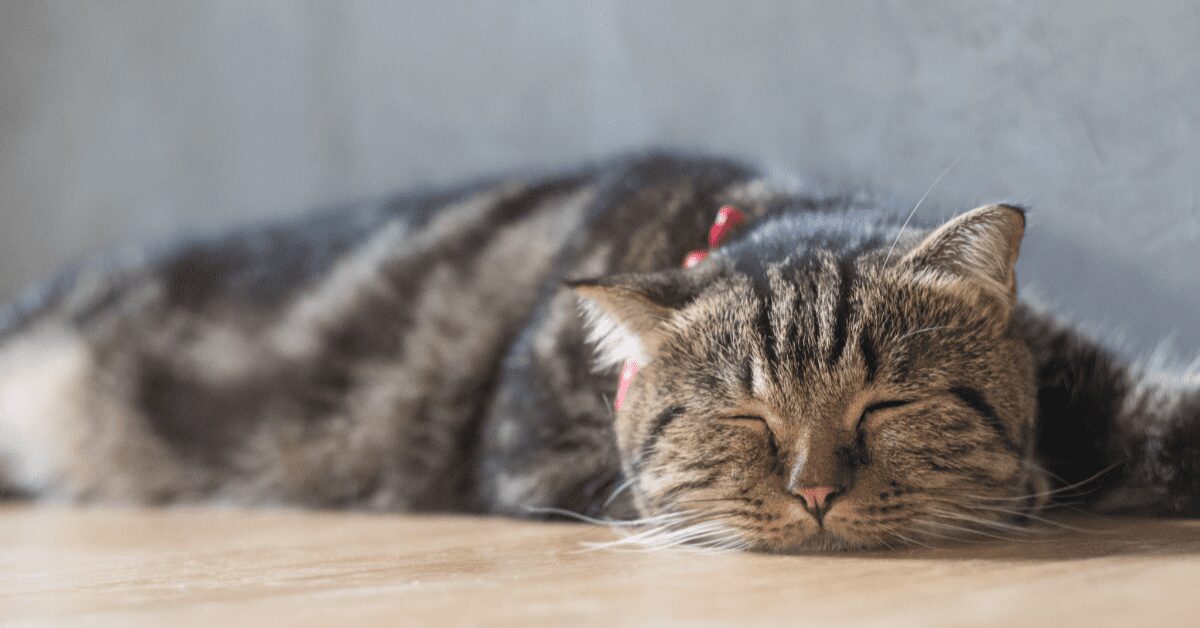Key Points
- Kidney disease occurs when the kidneys lose some or all of their function.
- If your vet suspects that your cat has kidney disease, they’ll run a series of blood tests to assess organ function and damage.
- Some cases of acute kidney disease can be treated before the organs become permanently damaged, and any additional treatments will depend on the original cause of the kidney damage.
Kidneys are major organs, for both cats and their human counterparts. Cats have one kidney on each side of their abdomen, and these organs help regulate their blood pressure, filter metabolic waste, and produce hormones and red blood cells which carry oxygen throughout the body. When a cat’s kidney and its complex filtering system breaks down, waste can trickle into their bloodstream and eventually lead to kidney disease.
Also known as kidney failure or renal failure, this disease is one of the most common cat health problems found in senior cats. Here, we cover the symptoms, treatments, and types of chronic kidney disease in cats so you can ensure your cat lives the best life possible.
Symptoms of kidney disease in cats
Cats are masters at masking their weaknesses, which makes it difficult to spot the early signs of most illnesses, including kidney disease. According to Dr. Chyrle Bonk, veterinarian at Senior Tail Waggers, early detection is extremely important. “There are tests that can diagnose kidney disease in cats in its early stages,” she says. “This way, conservation of their kidneys function is more successful.”
Often dismissed as normal signs of aging, symptoms of kidney disease tend to come on suddenly, beginning with a lack of appetite and lethargy. Clinical signs are often related to the severity of the disease and any underlying causes. While not every cat with early kidney failure will develop the following symptoms, the most common signs of kidney disease in cats include:
- Increased thirst and urination
- Intermittent vomiting
- Dehydration
- Mouth sores
- Bad breath
- Weight loss
- Decreased appetite
- Seizures
- Decreased activity
- Lower back pain
If your cat is experiencing any of the above symptoms or is in visible distress, bring them to your veterinarian immediately. If kidney disease is caught early on in your cat’s life, treatment and management can mean a close-to-normal life for your cat. It can also slow down the progression of kidney damage and prevent or slow the progression of secondary problems like anemia.
Causes of kidney disease in cats
Kidney disease occurs when your cat’s kidneys become damaged and stop working as well as they should. When part of the kidney is damaged, the rest of the organ works harder to keep up with the body’s demands. This extra effort eventually wears the kidney out, and function further decreases as the disease progresses. There are two types of kidney disease found in cats:
- Acute kidney disease is a short-term disease that comes on suddenly. This can occur if your cat ingests a poisonous or toxic substance such as antifreeze, certain plants, or cleaning fluids. It can also be caused by physical blockages that prevents the kidneys from doing their job.
- Chronic kidney disease is a long-term illness that gets worse as it progresses over time. Sometimes referred to as kidney insufficiency or renal insufficiency, chronic kidney disease cannot be cured and must be managed daily. Cats with acute kidney disease may eventually develop chronic kidney disease.
Kidney disease can also be inherited, when cats experience congenital malformations of the kidneys, or polycystic kidneys. Other causes of kidney disease include kidney stones, bacterial infections, trauma or acute kidney injury, cancer, or even diabetes.
Generally, one in three cats is likely to develop kidney disease during their lifetime. Certain breeds are also predisposed to developing kidney disease at higher rates, including Persians, Maine Coons, and Abyssinians. Chronic kidney failure mainly affects older cats, since kidneys tend to slow down as cats age. Only about 10% of kidney disease cases occur in cats younger than three years old.
Diagnosis of kidney disease in cats
If your vet suspects that your cat has kidney disease, they’ll run a series of blood tests to assess whether your cat has proper kidney function and check for damage. Urinalysis, or a urine sample test, can show high protein levels, which is an indication of kidney problems. Through these tests, your veterinarian will look at your cat’s calcium levels, white blood cell count, electrolytes, phosphorus levels, and creatinine levels, among others. Your veterinarian may also suggest additional diagnostic testing.
Once kidney disease is diagnosed, it will be classified into one one of the following four stages based on its severity:
- Stage I: clinical signs are usually not apparent
- Stage II: some clinical signs are present
- Stage III: many clinical signs are present, and the cat seems to be sick
- Stage IV: a majority of the clinical signs are noted, and the cat appears to be in physical distress
What are the treatment options for kidney disease in cats?
If your cat has been diagnosed with kidney disease, your vet will work with you to determine a treatment plan. Treatment options depend on the type of kidney disease, how far it has progressed, and your cat’s age – with the overall goal of improving your cat’s symptoms and quality of life. Treatment typically includes a combination of special diets, antibiotics, potassium supplements, phosphate binders, and vitamins B and C.
Some cases of acute kidney disease can be treated before the organs become permanently damaged, and any additional treatments will depend on the original cause of the kidney damage. Unfortunately, chronic kidney disease doesn’t have a cure, and the damage is irreversible. According to Dr. Bonk, treatments are designed to help your furry friend feel better. “Management with medications, a diet change, and fluid therapy can help a kitty feel better even though it won’t reverse the kidney damage,” she says.
Recovery and care
Cats diagnosed with early-stage kidney disease will benefit from nutritional management and frequent visits to the vet. Cats with chronic kidney disease will often be monitored for further progression. Depending on the diagnosis, cats can go on to have a great quality of life for years to come.
Prevention
The most important step you can take in preventing kidney disease in cats, as well as other illnesses, is to keep your cat healthy. This includes:
- Regular checkups: You should bring your adult cat or kitten to the vet for routine checkups and wellness visits at least twice per year to ensure they’re up to date on all vaccinations, inspections, and dental cleanings. Your veterinarian is most likely to detect early-stage kidney disease through these routine wellness visits.
- Proper diet and exercise: The food your cat eats and how often they exercise plays an important part in their overall health. Much like a healthy weight can help your furry friend avoid diabetes, spending a few minutes each day chasing a toy or climbing a cat tree can go a long way in preventing potential kidney problems.
- Ensure comfortability: It’s important for cats to be comfortable where they live, so be sure to keep your furry friend’s life as stress-free as possible. Pay special attention to eliminating stressors in the places where your cat sleeps, eats, and goes to the bathroom. Make sure they have their own area to rest with soft blankets or cushions to lay on, away from any children or fur siblings in the home.
Dr. Bonk suggests monitoring your cat’s litter box for any change in activity. “If you notice more urine than normal in the litter box, consider keeping multiple cats separate to determine who is having the issue,” she says. “Seeking veterinary care is the best way to go.”
What to expect at the vet’s office
Veterinarians know how scary it is for both cats and their parents when kidney failure is on the table, and are there to ease the pain and answer any questions you may have. Identifying any underlying health factors can help manage kidney disease, so your veterinarian will start by measuring your cat’s blood pressure and taking blood and urine samples to check for anemia and thyroid issues like hypertension.
The bottom line
While an unexpected kidney disease diagnosis can be scary, pet parents shouldn’t lose hope. If your cat is exhibiting any signs of kidney disease, bring them to your veterinarian right away to ensure they receive the care they need.
FAQs
How long can cats live with kidney disease?
Ultimately, life expectancy of a cat with kidney disease varies depending on the underlying cause and the stage at which the disease is diagnosed. Chronic kidney disease is a progressive disease that worsens over time, but the rate of progression is highly variable. Cats diagnosed with early-stage chronic kidney disease have an average survival rate of three years.
What is the most common cause of kidney failure in cats?
Kidney failure may be brought on by a variety of reasons, inducing kidney stones, cancer, and inflammation of the kidneys. Toxins, urinary blockages, and dehydration from other illnesses can also contribute to kidney failure.
Did you know?
- Certain diseases and hereditary conditions can make your cat more likely to develop kidney disease.
- Early diagnosis is key when it comes to diagnosing, treating, and managing kidney disease in cats.






